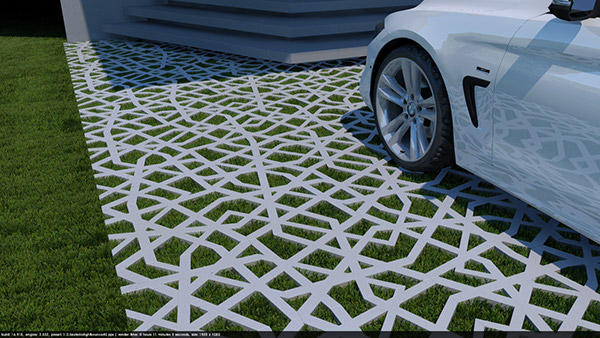

They are appealing for their ability to add character to a site and come in a variety of options.

Just as standard concrete is more costly than standard asphalt, pervious concrete is typically more expensive than porous asphalt.Īpplication opportunities: parking areas, subdivision streets, pedestrian walkways, sidewalks, driveways and bike lanes.įor most applications, pavers are the most expensive solution, primarily due to labor costs required for installation. Properly constructed parking areas utilizing pervious concrete will last 20 to 40 years, according the Southern California Ready Mixed Concrete Association. According to the National Asphalt Pavement Association, porous asphalt can have a life span beyond 20 years.Īpplication opportunities: parking areas, low-volume and low-speed roadways, pedestrian walkways, sidewalks, driveways and bike lanes.Īccording to the 2016 EPA Edison parking lot study, pervious concrete has the highest infiltration rate of the three pavement systems. Although initial costs are typically higher than standard asphalt, it can be a cost-effective solution if it eliminates the need for stormwater infrastructure. In most applications, porous asphalt is a cheaper option than pervious concrete or pavers. Here is a brief summary of each pavement system. The study found that while performance of the three systems varied, all three were effective tools for infiltrating direct rainfall and stormwater run-on. Environmental Protection Agency (EPA) compared the performance of porous asphalt, pervious concrete and permeable interlocking concrete pavers at its parking lot in Edison, N.J. Project type, location, budget and other factors should be considered before selecting a permeable pavement system. Reduced need for drainage infrastructure.Reduction in pollutants entering waterways.When installed properly, all three offer economic and environmental benefits including: Porous asphalt, pervious concrete and pavers are common permeable pavement systems. For this reason, permeable pavement is often a key feature of LID projects. One of the guiding principles of LID is to reduce impervious surfaces so that rainwater can soak into the ground where it lands instead of requiring construction of new drainage structures. Cities are increasingly turning to low impact development (LID) techniques to help meet water quality goals, promote natural conservation and reduce the need for costly stormwater infrastructure.


 0 kommentar(er)
0 kommentar(er)
